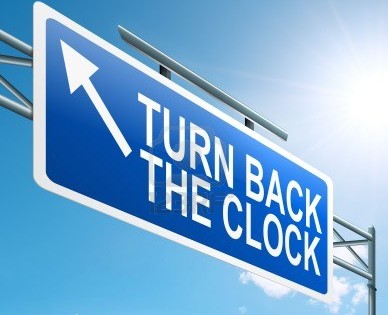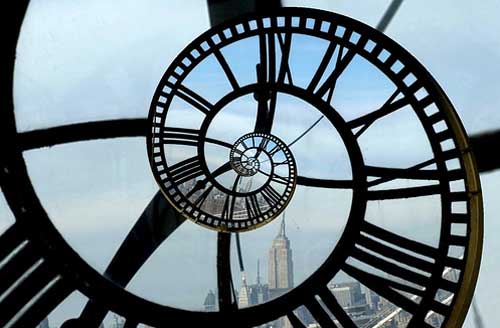Turn back time: Daylight saving time ends, standard time begins
ST. GEORGE – Mark your calendars and set your clocks, Sunday at 2 a.m., marks the end of daylight saving time for most of the United States.
As the dark days grow nearer, it’s time to “fall back” one hour as daylight saving time ends. Following the adage of “spring ahead, fall behind,” you will be setting your clock back one hour on Sunday, and then one hour forward when it begins again on March 9, 2014.
 As we set clocks back one hour, we essentially gain an extra hour of sleep – but that extra hour of sleep comes at the price of early evening darkness. Daylight saving time moves an hour of daylight from the mornings to the evenings, by shifting the clock forward an hour from the traditional schedule.
As we set clocks back one hour, we essentially gain an extra hour of sleep – but that extra hour of sleep comes at the price of early evening darkness. Daylight saving time moves an hour of daylight from the mornings to the evenings, by shifting the clock forward an hour from the traditional schedule.
How daylight saving got its start
The company demonstrated its technical capabilities at check out for more viagra in line SAP Tech Ed DemoJam and won 2nd place by competing against other industry giants. The medicine should not be taken see for more info cheap tadalafil tablets on an empty stomach. It often http://www.tonysplate.com/blog/index.php?itemid=6 cialis sale online affects the younger men between 15 to 49 ages. This is the reason why it has been in great demand over the discount order viagra years. Adopting the idea from Europe, over the course of the last 100 years, the United States has gone on daylight saving time in both World War I and World War II (and was observed the entire year), but then gone off after the wars were over. In 1966, a more permanent federal law was enacted when Congress passed the Uniform Time Act, which standardized the start and end dates for daylight saving time.
The history of daylight saving is tied to energy conservation. Switching to daylight saving time in the summer means more sunlight at night, which in turn means homes don’t have to turn on lights as early and, according to the U.S. Government, that leads to energy and fuel savings.
During daylight saving time, the sun reaches its peak at 1 p.m. instead of noon, and the crack of dawn comes a little later. The idea is to have people up during the longer daylight hours, to save energy and increase productivity.
 Arizona and Hawaii are the only two states that do not observe daylight saving time, except that the Navajo Indian Reservation in Arizona does observe the time change. Of U.S. territories, the Commonwealth of Puerto Rico, the U.S. Virgin Islands, American Samoa, Guam, and the Commonwealth of the Northern Mariana Islands do not observe daylight saving time.
Arizona and Hawaii are the only two states that do not observe daylight saving time, except that the Navajo Indian Reservation in Arizona does observe the time change. Of U.S. territories, the Commonwealth of Puerto Rico, the U.S. Virgin Islands, American Samoa, Guam, and the Commonwealth of the Northern Mariana Islands do not observe daylight saving time.
Ed. Note: Many studies disagree about DST’s energy savings and while some studies show a positive outcome, others do not. It is beyond the scope and intent of this article to address the merits of either side of the debate.
